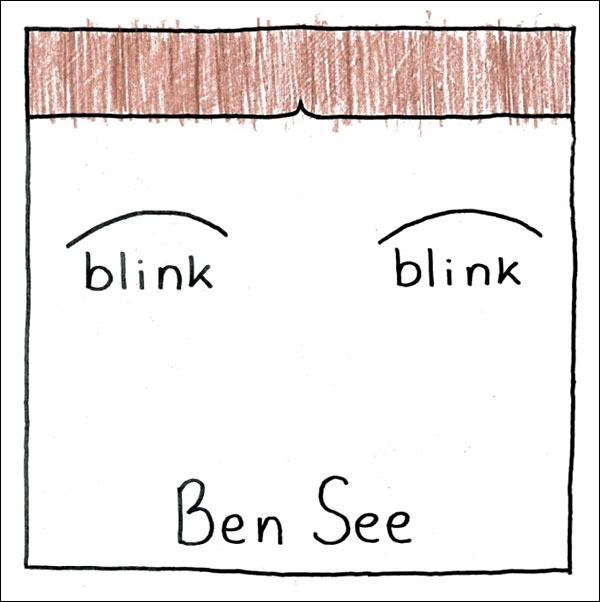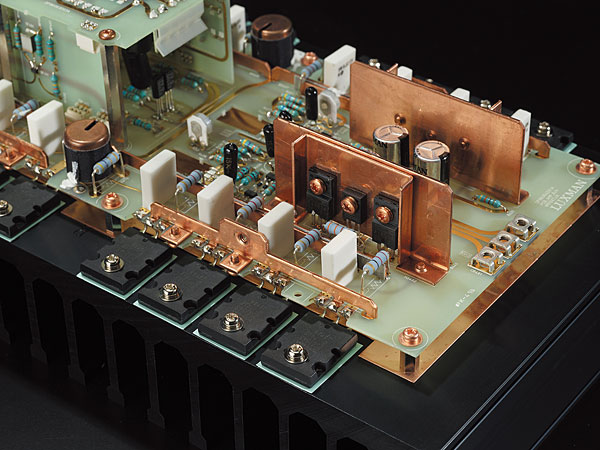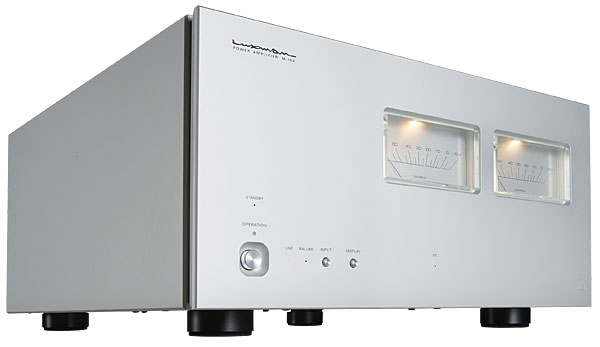| Columns Retired Columns & Blogs |
Is there any way to judge the amount of negative feedback that is used based on any particular measurement?
Power in listening
To make it easier to swap in and out of my system, I placed the M-10X and the Parasound monoblocks with which I was going to compare it on wheeled dollies. As usual when I review an amplifier or digital product, I didn't do any critical listening for a couple of weeks after installing the M-10X in my system, just using it for my daily dose of music. This process ensures that the product is fully broken in and allows me to acclimatize to its presentation.

The source was my Roon Nucleus+ server sending data over my network to a MBL N31 D/A processor, which was connected to the Luxman with AudioQuest Wild Blue balanced interconnects. I controlled volume with the Roon app.
As I used the M-10X during those first two weeks, I found it difficult to discern an identifiable character that the amplifier was imposing on the music. With all types of music, the midrange was clean, uncolored, and detailed. The highs were also clean, with no emphasis or sibilance on the sound of cymbals. Low frequencies were articulate, and—I have to return to this word—clean. With the small speakers I was using, I wasn't particularly aware that I was missing much of the low bass.

Brian Bromberg's double bass on "The Saga of Harrison Crabfeathers," from Wood (16/44.1 FLAC, Tidal/A440 Music Group), for example, sounded both articulate and muscular with the Luxman, as did Christian McBride's lighter-toned instrument on his duet with Sting on "Consider Me Gone," from Conversations with Christian (24/96 FLAC, Qobuz/Mack Avenue). Sting's vocal sounded particularly palpable.
When I am not listening critically, when I am writing or catching up on my reading, I let Roon's Radio function be my DJ, and in the early evening I stream Night Tracks on the BBC's Radio 3 internet station. With the M-10X providing power, my attention kept being attracted to the music.

While listening to the latter one evening, with the Luxman driving the GoldenEar speakers, I had to get up from in front of my desk, where I had been answering emails, to sit in the listening chair. The recording being played was an extraordinary piece constructed entirely from overdubbed voices. The BBC Radio 3 website told me it was "Balloon Tree" from Ben See's album blink blink (BandCamp), and even with Radio 3's 128kbps stream, the Luxman's presentation was compelling. I immediately searched for a higher-resolution version and found it in 16/44.1 FLAC on Tidal. The overlaid intakes of breath at the start of the song sounded palpable, and the layered descant lines were presented way behind the close-miked lead voices.
Roon Radio followed "Balloon Tree" with "Murmuration" from Max Richter's Voices (Pt.1 & 2) (24/48 MQA, Tidal/Decca Classics), performed by chamber choir Tenebrae. A woman intones a list of the rights to be expected by all people, her voice underpinned and surrounded by a slow-moving chord sequence that mixes string instruments and synthesizer. The Luxman's presentation was so compelling and so richly detailed that I sat and listened to the entire 103-minute album.

Compared with the Parasound Halo JC 1+
In his review, Wes Phillips compared the B-1000Fs with the original version of Parasound's Halo JC 1 monoblock. It is perhaps not coincidental that until the arrival of the Luxman M-10X, I had been using the current version, the Halo JC 1+, which I reviewed in May 2020, and which costs $16,990/pair.
For the first comparison, I cued up the 24/192 needle drop of Joe Walsh's "Rocky Mountain Way" I had made from a 12" 45rpm single (ABC ABE 12002). Even with the KEF standmounts, replacing the Luxman with the Parasounds endowed the lows with extra weight while equaling the Japanese amplifier's clean midrange and highs. Considering that I was comparing this stereo amplifier with a pair of much more powerful monoblocks, that is perhaps to be expected (though I did note that the M-10X's 80,000µF of supply capacitance is almost twice the Halos' combined 44,800µF.)

My final comparison was with the GoldenEar speakers, using the chamber orchestra version of Copland's Appalachian Spring, which I had recorded live at the 1995 Santa Fe Chamber Music Festival. This was the first recording I made with the microphone array that was to become my go-to for live recording projects: a central ORTF pair of cardioids flanked by two omnidirectionals, with the outputs of the two pairs time-aligned in the mix. The cardioids give a stable, accurate stereo image with the omnis adding low-frequency bloom. From the hushed opening through to the joyful "Simple Gifts" melody, the Luxman and Parasounds both produced the clear, stable image of the orchestra in Santa Fe's St. Francis Auditorium that I had worked to create. Both amplifiers correctly placed the woodwinds and piano behind the strings, and the occasional cough from the audience was placed well back in the soundstage with both the Luxman and Parasounds. The presentation of the cellos and basses was similarly articulate. I was hard put to choose one model of amplifier over the other.

Summing up
Perhaps it is fitting that Luxman is now owned by IAG, which also owns Quad. It was Quad's founder, the late Peter Walker, who defined the role of a perfect power amplifier as being "a straight wire with gain," neither subtracting from the signal it was amplifying nor adding to it. I have yet to encounter an amplifier that meets that ideal in every way, but from the month it spent in my system, I believe that Luxman's M-10X gets very close. Highly recommended.

Is there any way to judge the amount of negative feedback that is used based on any particular measurement?

Each JC1+ has 198,000uF of OUTPUT capacitance. The 44,800uF is the INPUT power supply capacitance. Lets get our facts strait.


Hi
Sorry, what do you mean by "OUTPUT capacitance" ????
Jack L

Hi
Please get your "facts strait" when you said "198,000uF of OUTPUT capacitance.
You asked what you meant by it. You ignore my question ! You know or don't know the right answer at all ?
Jack L

Do you not understand filter capacitance in power supplies? Why do you keep asking the same idiotic question over and over?
Have another....I am done here.

Hi
YOU were 100% drunk when you quoted above stupid statement. YOU need a coffee to wake you up.
If YOU were not drunk, your would have stated: "198,000uF FILTER capacitance used in amp's output power section." You expect every consumer readers here knows your drunken use of English ????
I started desigh/builing solidstate power amps some 4 decades back.
FYI, If you knew enough filter capacitors, you should know huge huge huge capacitance is only part of the filter design for better SOUND !
Do you know the AC internal design of a capacitor ??

That was enjoyably well-written and I thought it was one of the better ones from the most recent Stereophile.